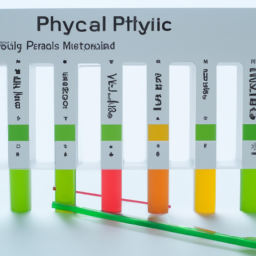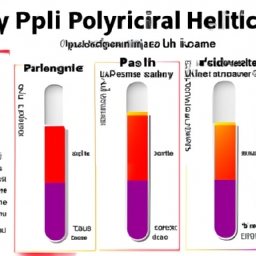Different types of H. pylori tests and their accuracy

How to prepare for a H. pylori testing?
2023-03-05
Treatment options for H. pylori infection
2023-03-05Different types of H. pylori tests and their accuracy

Different types of H. pylori tests and their accuracy
-
Table of Contents
“Accurate H. pylori Testing – Get the Results You Need!”
Introduction
Helicobacter pylori (H. pylori) is a type of bacteria that can cause infection in the stomach and small intestine. It is estimated that up to two-thirds of the world’s population is infected with H. pylori. The infection can cause a range of symptoms, including abdominal pain, nausea, vomiting, and bloating. It can also lead to more serious conditions such as ulcers and even stomach cancer. To diagnose H. pylori, a variety of tests are available. These tests vary in accuracy and cost, and it is important to understand the differences between them in order to make an informed decision about which test is best for you. This article will discuss the different types of H. pylori tests and their accuracy.
Understanding the Pros and Cons of Different H. pylori Tests and Their Accuracy
Helicobacter pylori (H. pylori) is a type of bacteria that can cause infection in the stomach and upper part of the small intestine. It is estimated that up to two-thirds of the world’s population is infected with H. pylori. While most people with H. pylori do not experience any symptoms, it can cause a range of digestive issues, including ulcers and gastritis.
Due to the prevalence of H. pylori, it is important to be able to accurately diagnose the infection. There are several tests available to detect H. pylori, each with its own advantages and disadvantages. It is important to understand the pros and cons of each test in order to make an informed decision about which test is best for a particular patient.
The most common test for H. pylori is the urea breath test. This test is non-invasive and relatively inexpensive. It is also highly accurate, with a sensitivity of up to 95%. The main disadvantage of the urea breath test is that it can take up to two hours to complete.
Another test for H. pylori is the stool antigen test. This test is also non-invasive and relatively inexpensive. It is also highly accurate, with a sensitivity of up to 95%. The main disadvantage of the stool antigen test is that it can take up to three days to get the results.
The third test for H. pylori is the endoscopy. This test is invasive and more expensive than the other two tests. However, it is also the most accurate, with a sensitivity of up to 99%. The main disadvantage of the endoscopy is that it is an invasive procedure and can be uncomfortable for the patient.
In conclusion, there are several tests available to detect H. pylori, each with its own advantages and disadvantages. It is important to understand the pros and cons of each test in order to make an informed decision about which test is best for a particular patient.Comparing the Accuracy of Different H. pylori Tests
Helicobacter pylori (H. pylori) is a type of bacteria that can cause infection in the stomach and upper part of the small intestine. It is estimated that up to two-thirds of the world’s population is infected with H. pylori. Accurate diagnosis of H. pylori is important for the successful treatment of the infection.
There are several tests available for the diagnosis of H. pylori. These tests can be divided into two main categories: invasive and non-invasive. Invasive tests involve taking a sample of tissue from the stomach or small intestine, while non-invasive tests involve taking a sample of blood, breath, or stool.
The accuracy of the different tests for H. pylori varies. The most accurate test is the invasive endoscopy, which has a sensitivity of up to 95%. This means that it can detect up to 95% of cases of H. pylori infection. The non-invasive tests have a lower sensitivity, ranging from 70-90%.
The accuracy of the different tests also depends on the type of sample used. For example, the breath test has a higher accuracy when a sample of breath is taken after a meal, while the stool test has a higher accuracy when a sample of stool is taken after a meal.
In conclusion, the accuracy of the different tests for H. pylori varies depending on the type of test and the type of sample used. The most accurate test is the invasive endoscopy, which has a sensitivity of up to 95%. The non-invasive tests have a lower sensitivity, ranging from 70-90%.<h3 id=”wpaicg-exploring-the-different-types-of-h-pylori-tests-and-their-accuracy“>Exploring the Different Types of H. pylori Tests and Their Accuracy
Helicobacter pylori (H. pylori) is a type of bacteria that can cause infection in the stomach and upper part of the small intestine. It is estimated that up to two-thirds of the world’s population is infected with H. pylori. While most people with H. pylori do not experience any symptoms, it can cause a range of digestive issues, including ulcers, and is associated with an increased risk of stomach cancer.
Due to the potential health risks associated with H. pylori, it is important to diagnose and treat the infection. To do this, a variety of tests are available to detect the presence of the bacteria. These tests can be divided into two main categories: invasive and non-invasive.
Invasive tests involve taking a sample of tissue from the stomach or small intestine. This can be done through a procedure called an endoscopy, in which a thin, flexible tube with a camera is inserted through the mouth and into the stomach. The tissue sample is then sent to a laboratory for testing. Invasive tests are considered to be the most accurate way to diagnose H. pylori, but they are also the most expensive and invasive.
Non-invasive tests are less expensive and less invasive than invasive tests. These tests involve taking a sample of blood, breath, or stool and sending it to a laboratory for testing. Non-invasive tests are not as accurate as invasive tests, but they are still useful for diagnosing H. pylori.
The accuracy of H. pylori tests can vary depending on the type of test used and the laboratory performing the test. Generally, invasive tests are considered to be the most accurate, while non-invasive tests are less accurate. It is important to note that false positives and false negatives can occur with any type of test.
In conclusion, there are a variety of tests available to diagnose H. pylori. Invasive tests are considered to be the most accurate, but they are also the most expensive and invasive. Non-invasive tests are less accurate but are less expensive and less invasive. The accuracy of any test can vary depending on the type of test used and the laboratory performing the test.
Conclusion
Overall, H. pylori tests are an important tool for diagnosing and treating H. pylori infections. Different types of tests have varying levels of accuracy, and it is important to understand the strengths and weaknesses of each test before deciding which one to use. While the urea breath test is the most accurate test for diagnosing H. pylori, other tests such as the stool antigen test and the serology test can also be used to detect the presence of the bacteria. Ultimately, the choice of which test to use should be based on the individual patient’s needs and the availability of the test.
If you’re looking for accurate and reliable H. pylori tests, look no further! eTestMedical offers a variety of tests to detect the presence of H. pylori, so you can get the results you need quickly and easily. Click the link to learn more about the different types of tests available and how they can help you get the answers you need.



